designed for the way women work.
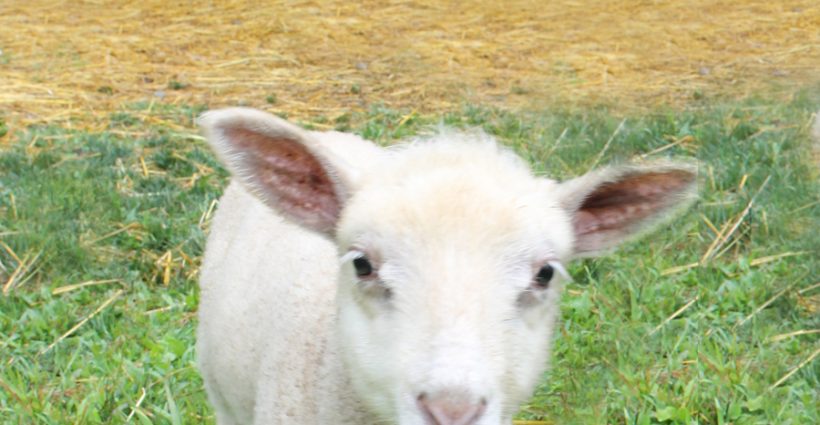
Living The Dream: Raising Sheep
Category: Presenting "The Curious Gardener"
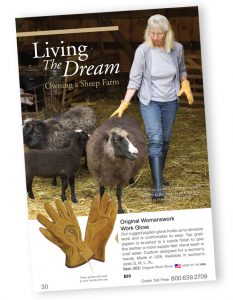 We interviewed Theresa Ryan about her experience as a sheep owner, one year after she and her husband Richard bought their first sheep. We hope this will be instructive to others thinking about raising sheep.
We interviewed Theresa Ryan about her experience as a sheep owner, one year after she and her husband Richard bought their first sheep. We hope this will be instructive to others thinking about raising sheep.
Womanswork: When did you start thinking about raising sheep?
Theresa: I have been knitting on and off most of my adult life and weaving for about six years. During that time I have purchased great quantities of wool. When I started networking with other weavers I found that many of them owned their own sheep. That’s when the seed was planted.
Womanswork: What was the thing that inspired you the most about having your own sheep?
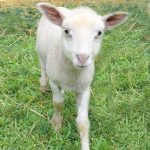
Theresa: I have always loved animals. When I was growing up, my grandfather had a dairy farm that we visited often, where I had a ‘pet’ chicken and hung out in the barn with the calves and cows. To my mother’s consternation, I would regularly bring animals home – stray cats, baby squirrels or rabbits, a dog, even a duck. So the opportunity to have a small menagerie of our own in our semi-retirement is a dream. We’ve started with sheep and plan to add chickens and pigs to the farm in the spring.
Womanswork: What steps did you take to prepare and over what period of time did you do this?
Theresa: More than a year in advance of actually owning the sheep we visited numerous sheep farms in the area and talked to the shepherdesses/breeders at length. They were all passionate about their sheep farms and never seemed to tire of our questions. These women inspired and encouraged us to start our own flock. We bought stacks of books and visited scads of websites to learn about raising sheep. We researched sheep breeds, fencing, shelters, feeders, equipment, pasture management, breeding, health, nutrition, sheep anatomy, and what plants are toxic to sheep.
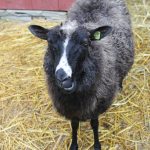
The following spring, we ‘reserved’ three ewe lambs right after they were born and one experienced two-year old ewe from a breeder in Connecticut with the plan to take delivery of them in the fall. I was fortunate enough to be present at the birth of one of the lambs, who gave birth to twin lambs of her own on our farm this past summer.
We built a barn, dug a trench from the house to the barn for water and electric, and installed wire perimeter fence. We purchased tubs, grain, hay, minerals, salt, water buckets, hay nets, lambing equipment, heat lamps, portable electric fence and solar energizers, and a few items for general sheep health.
We read that it’s important to establish a relationship with a veterinarian, so we arranged for a vet experienced with sheep to visit our farm right after the sheep arrived in the fall. We also got a quick lesson from her on how to trim their feet and give them vaccinations.
Womanswork: What were the expenses involved? Is your goal to make this profitable?
Theresa: The big ticket items were the sheep, the barn, the perimeter fence, and the portable electric fence. There was a modest investment in the equipment and supplies, and there is an ongoing expense for the grain, hay, minerals, salt, and medicine. The plan is to breed the sheep and sell the offspring, excess fleeces and wool, and fiber products made from the wool to offset the costs of maintaining the breeding ewes. Our plan is to have a maximum of 20 sheep at any given time, and we don’t think making a profit is possible on this scale.
Womanswork: What are some of the things that have surprised you?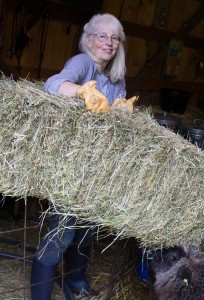
Theresa: We have had so many surprises, sometimes daily. We’ve discovered that the sheep are funny, affectionate, playful, extremely inquisitive, clever, fast runners, and smarter than they’re often given credit for.
Womanswork: Any disappointments?
One of the ewes had triplets this year, but one of them was stillborn. That is always going to be hard.
Womanswork: If someone wanted to raise sheep for dairy products, how would that be different?
Theresa: According to some estimates, there are over 1,000 different breeds of sheep. We decided on Finnsheep (or Finnish Landrace) because it is a multi-purpose sheep. They have excellent quality meat and wool. They are also good mothers, have a very sweet nature, and are very prolific. They have been known to have as many as nine lambs in one litter in Finland (where they hail from), and as many as seven in the US. Although Finnsheep are considered a reasonable alternative dairy sheep because of their prolificacy, their milk production drops way down after a month or so without human intervention. There is a small selection of highly productive dairy sheep to choose from in the world. East Friesian are the best milk production sheep and they are available in the US. Lambs of dairy sheep are removed from their mothers very early on, to maximize the ewe’s milk production, and are bottle-fed. Our lambs are allowed to stay with their mothers for several months, and are weaned when the mothers’ milk production is at its lowest, and after the lambs have learned what they need to know from their mothers, such as how to eat, what to eat, and how to respond to their environment.
Womanswork: Is there a rule of thumb about how much land you should have for sheep?
Theresa: There are a lot of variables, such as the type of soil, type of vegetation, the climate, the size and thriftiness of the sheep, etc., but in general one acre of land can support 4 or 5 sheep. There are also a number of variables for determining the area needed for each sheep in a confined structure, but 10 to 20 square feet per sheep is a fair estimate. The lower number would apply to a weaned lamb, and the latter for a nursing ewe and her lambs.
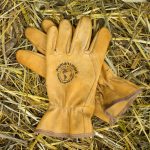
Womanswork: What do you love the most about your new adventure?
Theresa: We never tire of looking out the window and seeing our flock in our back yard, and I am really looking forward to processing their wool from start (washing, carding, spinning) to finish (knitting or weaving).
We were nervous at first, bringing four animals all at once to our new farm, but now we have fifteen! They make us smile every day. What a trip!
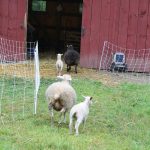
Here are links to some videos Theresa and Richard took in the first year. We’ll post more as they are available.
http://youtu.be/QE5qBa2lb3w
http://youtu.be/6pqbPMBU8o8
http://youtu.be/D78-__oeWq4
http://youtu.be/fMNSqLcfbfI




I am looking for someone who weaves dog hair. I have a German Shepherd and Belguim Malnois who have uncoats, and would like something knitted from their hair.